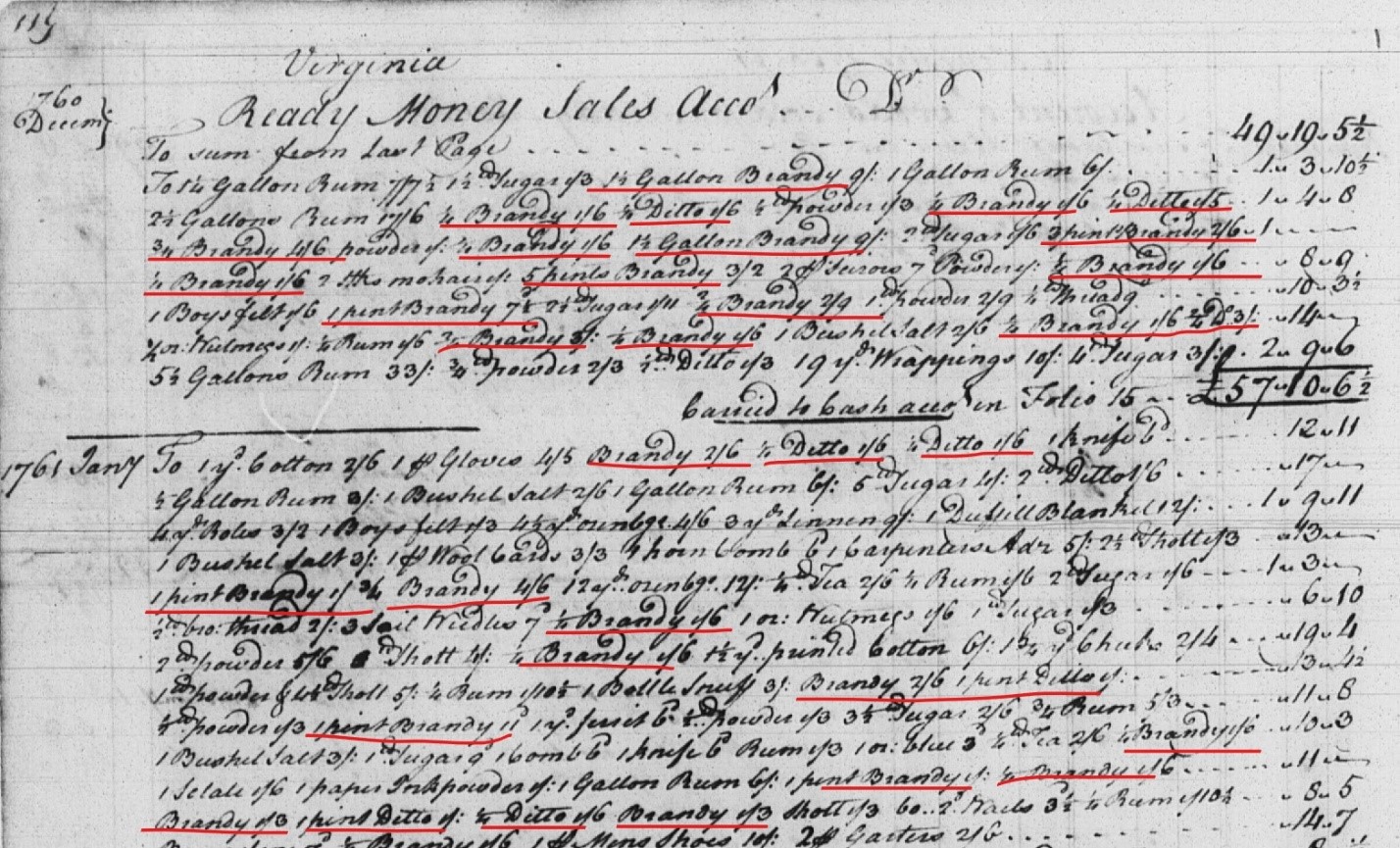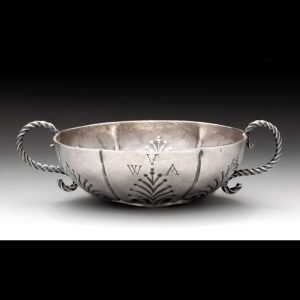Brandy in the 1760s
Austin Browning // AMH 4112.001 – The Atlantic World, 1400-1900
As many may already know, water wasn’t always clean or fit for human consumption in colonial America which required another source for beverages: alcohol. By the 1750s, rum became a large import to the colonies as the primary beverage of choice.[1] We saw this consumption of rum exemplified well in the Ready Money transactions from 1760-1761 at Glassford and Henderson’s Colchester store.
Brandy was also purchased, but may have been used in a somewhat different manner than rum. Looking at the Ready Money account, it was not purchased until December.[2] This suggests to me that brandy consumption was saved for the holiday season. Sales extend through March with two additional pints purchased in May. It was possible that brandy was not in supply year round due to it only appearing in the Ready Money accounts primarily from December through March. Additionally, it is worth noting the brandy was likely made locally and not imported.[3]


A striking observation was the relatively small amounts of brandy purchased as compared to rum. While rum was often purchased by the gallon, brandy was usually bought in smaller amounts, usually in one or two pints. This purchasing trend shows that massive amounts of brandy were not being consumed in one sitting, and adds credence to my theory that brandy was saved for special occasions and holidays rather than as a daily drink.
Purchasing brandy would have been done by almost anyone looking to celebrate special occasions, especially in the winter months. I think primarily the sale of brandy in Colchester, Virginia, showed an affinity for decadence and celebration. I imagine the average Virginian grew tired of rum which was consumed in massive amounts throughout the rest of the year. Brandy may have been a good change of pace and provide a good tasting alcoholic beverage for the entire family to enjoy.
[1] David C. Klingaman. “The Development of Coast-wise Trade of Virginia in the Late Colonial Period.” Virginia Magazine of History and Biography, vol. 77, no. 1, part 1 (January 1969), pp. 26-45.
[2] Alexander Henderson, et. al. Ledger 1760-1761, Colchester, Virginia folio 10 Credit, from the John Glassford and Company Records, Manuscript Division, Library of Congress, Washington, D.C., Microfilm Reel 58 (owned by the Mount Vernon Ladies’ Association).
[3] Sarah Hand Meacham. “‘They Will Be Adjudged by Their Drink, What Kinde of Housewives They Are’: Gender, Technology, and Household Cidering in England and the Chesapeake, 1690 to 1760.” The Virginia Magazine of History and Biography, Vol. 111, No. 2 (2003), pp. 117-150.